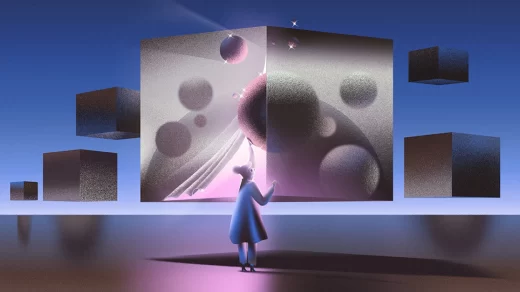Since the existence of image-based journalism and the overall rise in various media formats, we have become oversaturated with images. This in itself does not have to be viewed as a negative development in society. Much good has come from the advent of new media. People learn of different cultures and explore ever-changing forms of entertainment. With globalization working hand in hand with digital media, information has never been more accessible and quickly exchanged, as it is now. Of course, not including for those living in places where access to the Internet is suppressed. All humans can become curators through social media in their own right, as much as all humans can operate as journalists, updating the world on acts of protest in real time or documenting atrocities, live, from the middle of an active war zone. What used to be the sometimes-dangerous job of a reporter, especially when having to be on location in the midst of an armed conflict, is now even more pertinent for people actually living it. It is impossible for journalists to be present in all regions and at all times, meaning that through the recordings of regular citizens, the world can become aware of injustices taking place in those areas. This does not mean war journalism is non-existent, or any less crucial, but the significance of ‘ordinary’ people’s photographic evidence has grown in importance for testimony of inhumane crimes.
However, what happens when there is not one war-image circulating the world, but more than even containable within a single news article? Many artists have tackled the issue of media oversaturation and its effects, specifically relating to documentation of atrocities, since the Vietnam War. This form of ‘artivism’, where raising awareness and possibly changing audiences’ perception of a situation is the primary aim of the work, is what makes art an important and impactful tool for societal change. ‘Artivists’ are part of uncovering ‘the truth’ of the empirical world. Harun Farocki was a German filmmaker and lecturer. One of his most memorable works was titled ‘Inextinguishable Fire,’ from 1969. Similarly to his other films, Farocki’s ‘Inextinguishable Fire’ is in a short documentary style incorporating text, narration and images taken from mass media and news outlets at the time. The video is not only a critique of the West’s role in the Vietnam War, but more notably of the production of chemical weapons used in Vietnam, specifically napalm, the factories of which were located in the United States. The film begins with the following statement: “If we show you pictures of napalm victims, you’ll shut your eyes. You’ll close your eyes to the pictures. Then you’ll close them to the memory. And then you’ll close your eyes to the facts.” This memorable opening reflects the general premise of the artist’s stance on the mediation of tragedy and the effects of visualizing atrocities against people by the media. Although he does not say that news outlets should avoid publishing explicit images of such acts, but rather comments on the consequence that the oversaturation of such photographs may have on society’s perception of what armed conflict entails. If one sees too much drastic imagery, over time one may become immune to the event as a whole. Similarly, the overexposure of any kind of injustice can result in numbness towards the story, which in the end prompts a lack of action.
There is much debate surrounding the power that images hold and the politics of seeing them. The bombardment of human senses or the limitation thereof is how power is gained, meaning that senses are a form of politics. Given that visual culture is everywhere, with sight being a principle sense herein, it becomes clear that no matter what your personal views of the world are, the distribution or concealment of specific pictures play a huge part in fueling the power-dynamic nature of society – whether this results in taking action or not. However, a question arises in this new age of image saturation, of whether constant influence on our senses dulls or reinforces the power images of calamity hold over people? Mary Huber in an article for Frieze, a contemporary art magazine from London, discusses the sublimity of disaster photography and the aestheticism of photos depicting tragedy. In doing so, Huber points out that images of destruction no longer affect us the way they once did. She explains, that, “(…) The continued prevalence of such images is dispiriting; the more pictures photographers make of destruction, violence or poverty, the more accustomed we become to seeing them. There are simply too many on the Internet and social media to affect us (…).” It is important to mention that in the context of her work the author does not mean such imagery has no effect on people whatsoever, but rather with the oversaturation of photographs and videos we are less likely to remember them by the end of the day. This discussion may not be of pertinence, as we individually decide whether to let something affect us or not, and we as separate entities choose to let something have power over our actions. Nonetheless, it is quite relevant and possibly thought provoking to take this into consideration when analyzing the consequence of shifts in digital and mass media.



Recent Comments